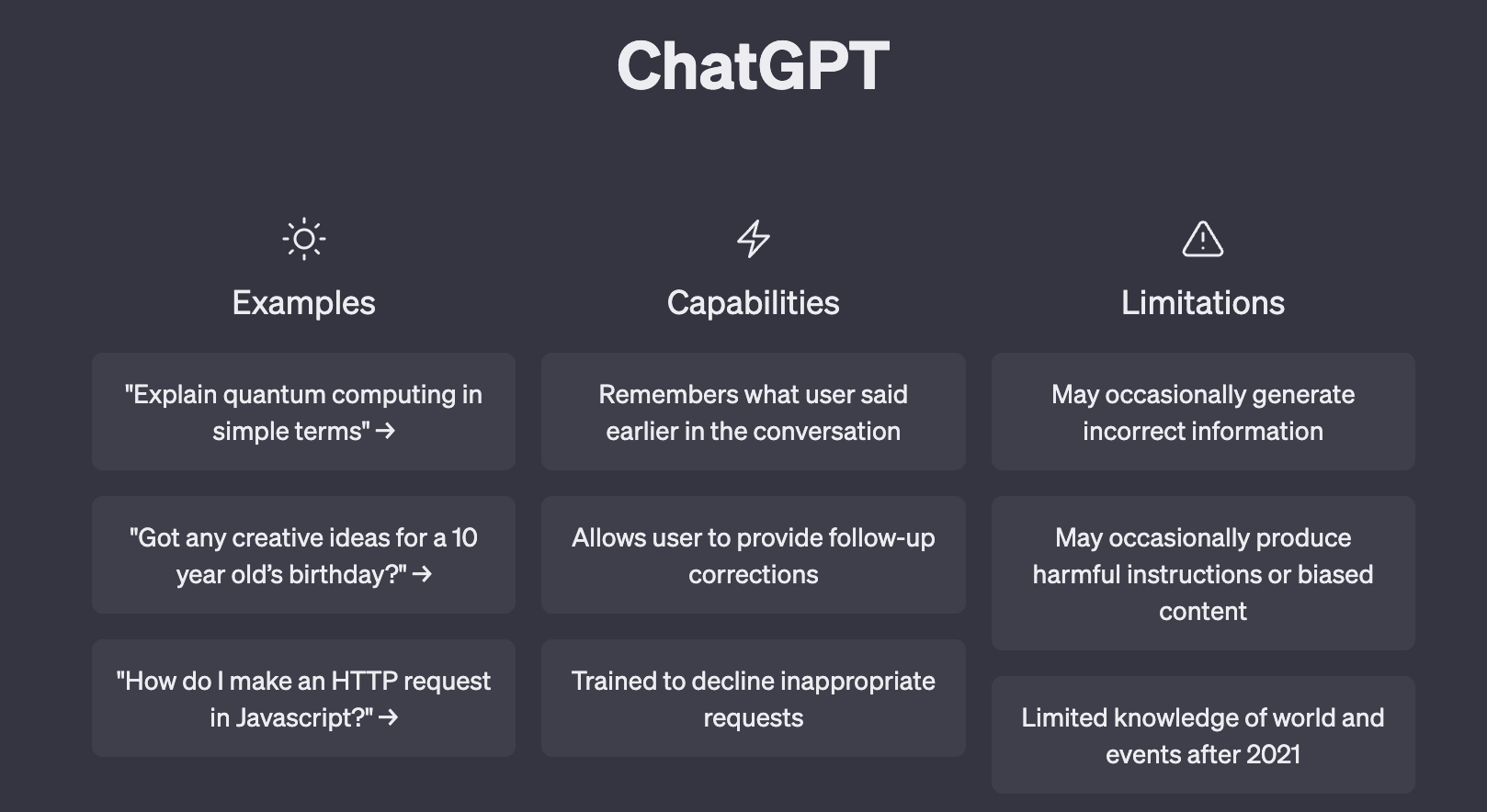How to Use ChatGPT for Software Development (With Prompts)
ChatGPT is an immensely powerful tool with the potential to revolutionize work norms. Meaning, organizations that fail to adopt generative AI tools risk falling behind and missing out on the massive productivity gains that early adopters can capitalize on. The key to leveraging ChatGPT’s power lies in determining the right ways to integrate it into workflows, and software development is no exception.
Developers who have thoroughly explored the capabilities of GPT 3.5 and 4 understand both the limitations and opportunities this technology presents. While ChatGPT is constantly evolving, it’s currently best used to augment software when guided by a human expert.
In this article, we’ll explore how software developers can effectively use ChatGPT to increase the quality and efficiency of their code and software products. By understanding the unique ways ChatGPT can be leveraged in the Software Development Life Cycle (SDLC), developers can position themselves to stay ahead of the curve and reap the benefits of this powerful tool.
How to Use ChatGPT for Software Development

ChatGPT (Generative Pre-trained Transformer) is a language model developed by OpenAI that uses deep learning to generate human-like responses to natural language inputs. It’s based on the Transformer architecture and was trained on a massive dataset of text from the internet. The model can be fine-tuned on specific tasks or applications, allowing for a wide range of use cases.
To use ChatGPT, developers can leverage APIs and libraries such as OpenAI’s API, Hugging Face’s Transformers, or spaCy. These tools provide pre-trained models and frameworks for building custom models that can be fine-tuned for specific applications. Additionally, developers can train their own models on custom datasets using open-source tools and libraries.
Now, let’s discuss the best use cases for ChatGPT’s current state.
Top Use Cases for ChatGPT in Software Development
 There are so many potential use cases for ChatGPT, from idea generation, to planning, to code implementation. Based on our experience (with this this infant, rapidly-changing technology), the following use cases work best to increase productivity by the highest degree.
There are so many potential use cases for ChatGPT, from idea generation, to planning, to code implementation. Based on our experience (with this this infant, rapidly-changing technology), the following use cases work best to increase productivity by the highest degree.
1. Code Completion & Optimization
Code completion is one of the most common applications of ChatGPT in software development.
ChatGPT can suggest code snippets or complete code based on a user’s input, making it particularly useful for repetitive tasks or commonly used functions.
For example, developers can use ChatGPT for:
- Autocomplete: As a developer types, ChatGPT can suggest code completions. For example, if a developer begins to type “def,” ChatGPT can suggest completing the line with a function definition, including the arguments and return type.
- Predictive coding: ChatGPT can predict what a developer is likely to write next based on their input. If a developer types a line of code that uses an array, ChatGPT can predict the next line of code that would logically follow and suggest it as an autocomplete option.
- Programming language translation: ChatGPT can translate code between different programming languages, such as Python and Javascript.
- Code optimization: By suggesting improvements or modification, ChatGPT can optimize your existing code to enhance its performance or efficiency, reduce code complexity, or improve code readability.
With the right domain knowledge, developers can guide ChatGPT and adjust its outputs to write code faster. Of course, all code produced by ChatGPT should be verified by an experienced developer.
Sample Prompts:
- “Given the code snippet, generate the next line of code that completes the functionality.”
- “Based on the function name and input parameters, suggest a possible implementation for the function.”
- “Generate a list of possible error messages and their corresponding solutions for this code block.”
2. Documentation
Documentation is critical to maintain consistency, transparency, usability, and clarity for software companies. However, writing documentation is often a time-consuming, tedious process for software developers. Even when documentation is created consistently, it’s very rarely written with the right technicality and tone for various audiences.
As a large language model, ChatGPT is exceptional at writing concise, clear, and audience-specific documentation as long as it’s given the right parameters and guidance.
ChatGPT can automatically generate code documentation, saving time that would otherwise be spent writing and maintaining these documents. For complex software products, developers can input code snippets or API endpoints, and ChatGPT can generate descriptions, parameters, and return types based on the input.
An advanced application of ChatGPT could enable interactive, auto-generating user guides. With natural language inputs, users can ask questions like “How do I add a new user to the system?” and ChatGPT can generate a step-by-step guide to perform that action.
Sample Prompts:
- “Given the function name and input parameters, generate a brief description of the function’s purpose and usage.”
- “Generate a sample code block with comments that explain the functionality of each line of code.”
- “Given a set of requirements, generate a technical specification document that outlines the software solution and its components.”
3. Bug Detection & Test Automation
ChatGPT can increase code quality and productivity with bug detection and test automation applications.
Here’s how ChatGPT can help specifically:
Bug Detection
ChatGPT can identify bugs by analyzing the codebase and flagging potential issues at various stages in the SDLC. Catching these bugs early in the development process can prevent them from becoming more significant issues later on.
ChatGPT works by searching for common coding errors or anti-patterns—then, it can list out specific issues like syntax errors, null references, and other common coding mistakes.
While developers can input code snippets or entire codebases into ChatGPT, they should adhere to governance outlined by their organization. IP protection and data security are critical issues, as OpenAI leverages ChatGPT inputs in training data. The potential exposure of sensitive information must be factored into your AI roadmap and should be a key consideration for whether your team develops an internal model.
Test Automation
Testing ensures software products function correctly and meet the user’s requirements. However, testing can be a time-consuming task, and writing test cases and scripts can be tedious and error-prone.
With generative AI, developers simply input test scenarios or requirements, and ChatGPT produces test cases and scripts that can be run automatically.
ChatGPT can also help with test case design by suggesting test cases that cover all possible scenarios. Additionally, ChatGPT can generate test data, which can ensure that software products are tested with a wide range of input values.
Sample Prompts:
- “Generate a list of possible edge cases and test scenarios for this code block.”
- “Given the expected output and input parameters, detect any differences in the actual output and provide possible reasons for the error.”
- “Given a set of test cases, generate an automated test suite that covers all possible scenarios.”
- “Given the code block, generate an automated test that checks for expected output and provides feedback for any unexpected behavior.”
4. Natural Language Processing (NLP)
In addition to speeding up existing processes, ChatGPT can also build out new software product features and enhance NLP applications.
ChatGPT leverages NLP to sound human-like, “remembering” conversational context (to a certain extent). As such, ChatGPT can analyze text input by end users, such as comments or feedback, to understand their intent. Then, it can take the appropriate actions and respond in kind.
Specifically, with the proper training, ChatGPT can:
- Improve the accuracy of natural language understanding in software
- Generate appropriate responses in chatbots or automated customer service systems
- Classify text based on predefined categories
- Translate between different languages
- Transcribe speech into text
- Generate domain-specific content
Additionally, software development teams can work with ChatGPT to brainstorm creative applications, features, and optimizations.
Sample Prompts:
- “Given a product review, determine the overall sentiment of the review as positive, negative, or neutral.”
- “Generate a list of possible responses to a customer inquiry based on previous interactions.”
- “Given a customer inquiry, provide a relevant response from a database of frequently asked questions.”
- “Given a text document, identify and categorize entities such as people, organizations, and locations.”
KMS for ChatGPT Software Development
With so many potential applications for ChatGPT in software development, it can be difficult to scope out the best use case to gain a true competitive advantage.
That’s where KMS can help.
Our team of experienced technologists can guide you through your AI roadmapping, provide ChatGPT training, and help you secure developers with the right skills to fill gaps on your team.
We understand the importance of adopting generative AI; we also understand the risks, limitations, and domain-specific challenges that arise when adoption isn’t grounded in the unique needs of your business.
Talk to our team to learn how KMS can help you accelerate software development with ChatGPT.







